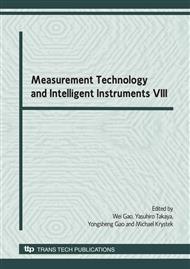p.349
p.353
p.357
p.361
p.365
p.369
p.375
p.379
p.383
Lie Detection Experiment Methodology: Infrared Image and Spectrum Analysis
Abstract:
Infrared-based lie detection experiment methodology can open the human life window (0.6µm-16µm) through which the body spontaneous or active infrared responding images be gathered and analyzed by spectrum scoring in features of geography and computation. These raw images mainly load the indirect physiological, biochemical or direct brain evidences of cognitive lie and truth. Aiming at the mimic play card test, three tests of lie detection based on the medium or near infrared spectrum (NIRS) in four kinds of spectrum analysis are discussed. The instruments include the lock-in phase amplifier of Stanford University, TTM (Thermal Texture Maps) in US patent, and self-made auricular point NIRS (Chinese Jiangsu appraisal certificate No. 1017). The subjects’ signals sampling positions are on glabella, brows, abdomen or auricular point Antitragus No. 2. The spectrum analysis methods utilize the self-built feature extraction algorithms, the wavelet microscopy, and the bispetrum in validities of 92%, 100%, 80% and 80%. The results support the lie-truth law of “truth be the baseline of lie detection in view of brain power” (the statistical finding from review of 3D-MRI lie-detection reports included our work, subjects n = 4) for making foundation to the future lie detection 3D-SoC design.
Info:
Periodical:
Pages:
365-368
Citation:
Online since:
June 2008
Authors:
Keywords:
Price:
Сopyright:
© 2008 Trans Tech Publications Ltd. All Rights Reserved
Share:
Citation:


